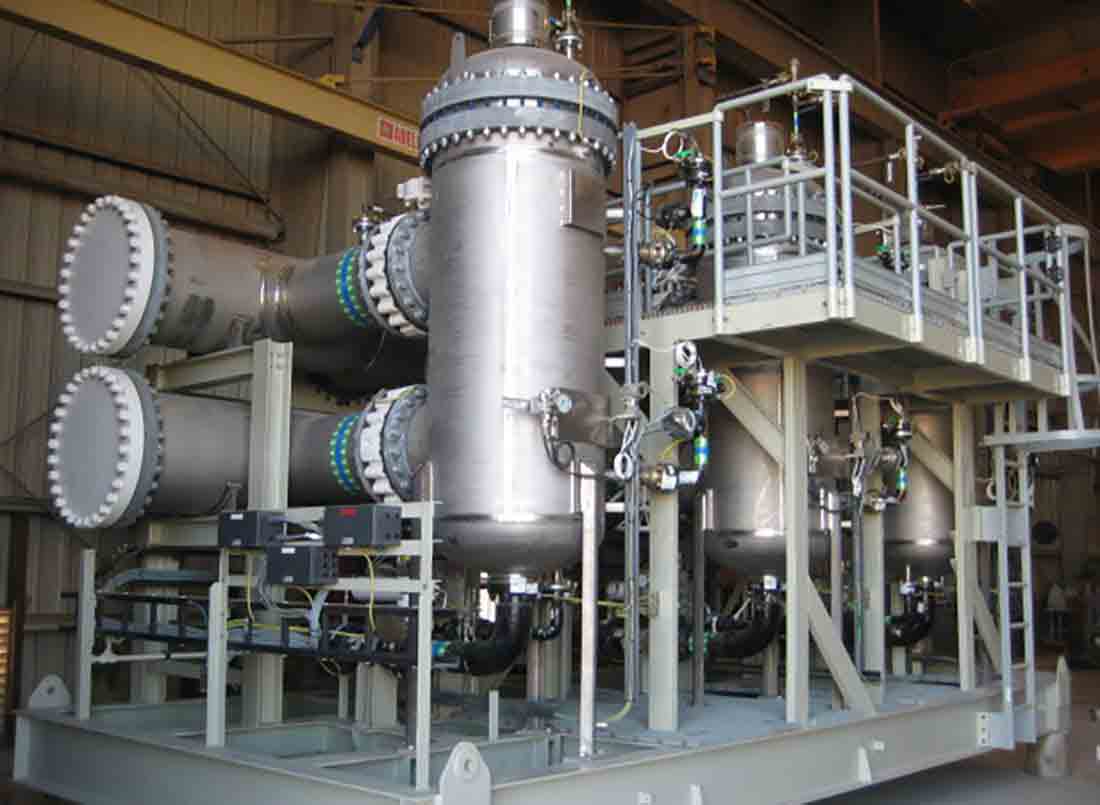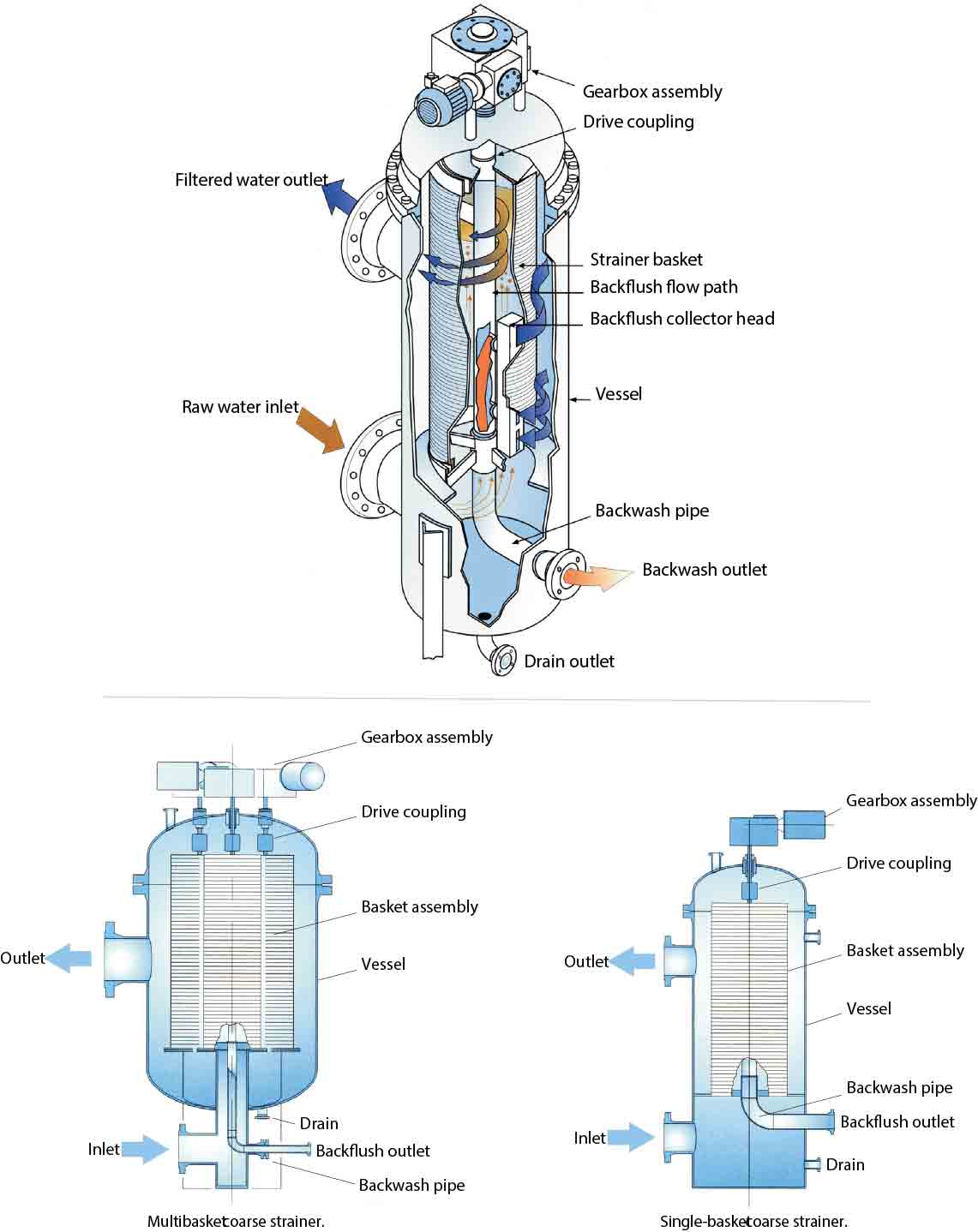SEA-SCREEN
Coarse Strainer

Reliable filtration of particles as small as 25 um
Water is used extensively by the oil and gas industry for cooling, injection, and utility purposes. Sea water requires specific filtration to protect downstream equipment and subsurface formations from contamination and operationally detrimental reactions. Developed and refined through long-term field experience, the METROL SEA-SCREEN coarse strainer provides industry-leading seawater filtration performance and operational reliability.
Advantages
- Design flexibility for high flow rates where size and cost are significant factors
- More effective screen backwashing from higher backwash velocities
- Improved reliability and lower operating costs compared with other designs
- Backwash automation removes operator intervention and lowers operating costs


Effective 25 um filtration using spiral-wound wedge wire screens
Water enters the METROL SEA-SCREEN coarse strainer into the bottom of the strainer basket, passes vertically upward, and then proceeds radially outward through the strainer screen. The precise, laser-manufactured slots in the spiral-wound wedge wire screen are capable of removing particles down to 25 um. As seawater passes through the screen, solids greater than the size of the strainer slot are trapped on the inner face of the screen. The strained water exits through the vessel outlet.
High backwash velocity delivers efficient screen cleaning
After a certain time in service, the filter element must be cleaned by backwashing trapped solids out of the screen.The SEA-SCREEN course strainer creates backwash velocity approximately 10 times that offered by other designs, providing the most efficient screen-cleaning regime on the market. The increasing volume of solids trapped in the screen is observed as an increase in differential pressure across the screen. Backwash can be automatically initiated when the observed differential pressure reaches a certain value, after a set period of time, or manually initiated.
Once backwash is initiated, a valve opens and a gear-driven collector head sweeps the entire surface of the screen inside the basket. Because the vessel stays online during a backwash cycle, opening the backwash valve creates a sufficient pressure differential between the vessel and the backwash outlet to cause the water to flow back through the screen to the collector heads. Collected solids then travel down through the collector shaft and the backwash valve to disposal.
